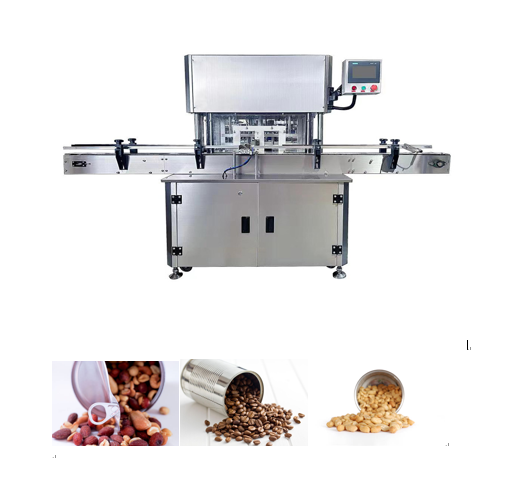Table of Contents
Benefits of Implementing Food Canning Line Automation
Food canning line automation is a process that involves the use of machinery and technology to streamline the production of canned food products. This automation can offer numerous benefits to food manufacturers, including increased efficiency, improved product quality, and reduced labor costs. In this article, we will explore the various advantages of implementing food canning line automation in your production facility.
One of the primary benefits of food canning line automation is increased efficiency. By automating the various stages of the canning process, manufacturers can significantly reduce the time it takes to produce canned food products. This increased efficiency can lead to higher production volumes and faster turnaround times, allowing manufacturers to meet the demands of their customers more effectively.
In addition to increased efficiency, food canning line automation can also improve product quality. Automation can help to ensure that each can is filled with the correct amount of product, sealed properly, and labeled accurately. This can help to reduce the risk of human error and inconsistencies in the production process, resulting in a more consistent and higher-quality product.
Another significant benefit of food canning line automation is the reduction of labor costs. By automating repetitive and labor-intensive tasks, manufacturers can reduce the need for manual labor and reallocate their workforce to more skilled and specialized roles. This can help to lower overall production costs and improve the profitability of the manufacturing operation.
Furthermore, food canning line automation can also help to improve workplace safety. By automating tasks that are physically demanding or potentially hazardous, manufacturers can reduce the risk of workplace injuries and create a safer working environment for their employees. This can help to boost employee morale and productivity, leading to a more efficient and successful production operation.
Additionally, food canning line automation can also help to reduce waste and minimize the environmental impact of the production process. By automating the canning process, manufacturers can more accurately control the amount of product used in each can, reducing the risk of overfilling or underfilling. This can help to minimize product waste and ensure that resources are used more efficiently.

Overall, the benefits of implementing food canning line automation are numerous and can have a significant impact on the success of a food manufacturing operation. From increased efficiency and improved product quality to reduced labor costs and enhanced workplace safety, automation can help manufacturers to streamline their production process and stay competitive in the market.
In conclusion, food canning line automation offers a wide range of benefits to food manufacturers, including increased efficiency, improved product quality, reduced labor costs, and enhanced workplace safety. By implementing automation in the canning process, manufacturers can streamline their production operation, reduce waste, and improve overall profitability. If you are considering implementing food canning line automation in your production facility, it is essential to carefully evaluate your needs and goals to determine the best automation solutions for your operation.
Step-by-Step Guide to Setting Up a Food Canning Line Automation System
Food canning line automation is a crucial aspect of modern food production, allowing for increased efficiency, consistency, and quality control. Setting up a food canning line automation system may seem like a daunting task, but with the right guidance and knowledge, it can be a straightforward process. In this article, we will provide a simple step-by-step guide to help you set up a food canning line automation system for your facility.
The first step in setting up a food canning line automation system is to assess your current production process. Take a close look at your existing equipment, workflow, and production goals to determine what areas can benefit from automation. Identify the key processes that can be automated, such as filling, sealing, labeling, and packaging, and prioritize them based on their impact on efficiency and quality.
Once you have identified the processes that can be automated, the next step is to research and select the right automation equipment for your needs. Consider factors such as production volume, product type, and budget when choosing automation equipment. Look for reputable suppliers and manufacturers that offer reliable and high-quality automation solutions.
After selecting the automation equipment, the next step is to design the layout of your food canning line. Consider factors such as space constraints, workflow efficiency, and ergonomics when designing the layout. Ensure that the equipment is arranged in a logical sequence to optimize production flow and minimize downtime.
Once the layout is finalized, the next step is to install and integrate the automation equipment into your existing production line. Work closely with the equipment supplier to ensure that the installation is done correctly and efficiently. Test the equipment thoroughly to ensure that it is functioning properly and meets your production requirements.
After the equipment is installed and tested, the next step is to train your staff on how to operate and maintain the automation system. Provide comprehensive training to your operators, maintenance technicians, and supervisors to ensure that they are familiar with the equipment and can troubleshoot any issues that may arise. Regular training and refresher courses are essential to keep your staff up to date on the latest automation technologies and best practices.
Once your staff is trained and comfortable with the automation system, the final step is to monitor and optimize the performance of your food canning line. Keep track of key performance indicators such as production output, downtime, and quality control to identify areas for improvement. Regularly review and analyze production data to identify bottlenecks, inefficiencies, and opportunities for optimization.
In conclusion, setting up a food canning line automation system requires careful planning, research, and execution. By following this simple step-by-step guide, you can successfully implement automation in your facility and reap the benefits of increased efficiency, consistency, and quality control. With the right equipment, layout, training, and monitoring, you can optimize your production process and stay competitive in the fast-paced food industry.






